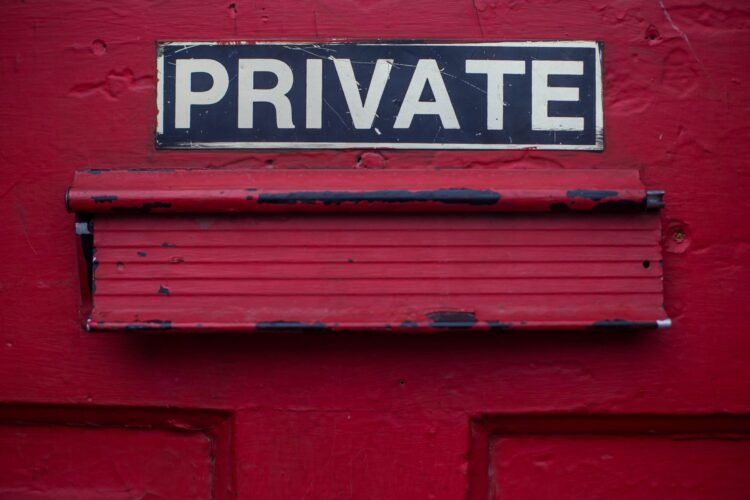By Jacqui Banaszynski
I long ago abandoned the illusion that I could block spam from my inboxes, prevent hacks of my accounts or keep much of my private business private. Unless you live way off-the-grid — maybe in a yurt on the outer edge of Mongolia with yaks for company — a plugged-in life means an exposed life. My solution: Try to change my passwords now and then. But mostly trust that I don't have much worth a hacker's time. I also try to follow my mother's pragmatic advice: If you don't want people to know about it, don't do it.
That proved valuable guidance in my reporting days, with a slight revision: If I couldn't explain it to editors or, more importantly, to readers, I didn't do it. But most of my bylined work was done in the cozy days of print, before email interviews, online commenting, social media screeds and endless anonymity. I have boxes of critical letters for some of my coverage — but they are just that: Letters that came just to me, or maybe through an editor, and were usually signed by the offended party. (When I was covering AIDS and gay-rights issues in the 1980s, I had a frequent letter-writer who put his criticism into poetry. In one critique, he managed to rhyme "body fluids" with "blood-sucking druids." He did not hide behind the anonymity of the internet, but signed his name, including his address and phone number.)
A cautionary tale from an email exchange
I also came up in the days when, at most newspapers, it was a fireable offense to show a story to a source. The rare exceptions required the editor's knowledge and permission, and usually a lot of negotiations with the source along the way. Not that the negotiations didn't get tense, especially when they involved coverage of public officials or figures. But they usually occurred under a begrudging gentlefolks' agreement — or maybe a torqued version of Vegas rules: What was said while navigating coverage stayed in the room.
It is naive of me to think that those professional courtesies could exist in the fast-twitch digital age. There aren't many filters — if any — between thought, words and the SEND button. At the same time, the conventions around sharing drafts with sources also has changed considerably; many of the freelancers I work with consider it a standard practice. More and more sources demand it as a price for talking.
Which is a winding road to a cautionary tale, prompted by last week's firing of Axios Tampa Bay (Florida) reporter Ben Montgomery. The details are too convoluted to be summarized here. A quick Google of Montgomery's name will pull up several accounts within the industry; Tom Jones of the Poynter Institute had a good, if inconclusive wrap, in his newsletter.
I say inconclusive because fingers are still being pointed, with Axios, Fox News and a spokesperson from the Florida Department of Education declining comment, or winking while they say nothing.
My own brief: Montgomery received a press release from the campaign of Florida Gov. Ron DeSantis about an upcoming event at which DeSantis would expose the "scams" being visited on students through "divisive concepts" such as diversity and inclusion. Montgomery sent a note back, saying the notice wasn't a press release, but "propaganda." His email apparently got passed around, copied and shared on Twitter and, zoom! We were off to the blame/claim races.
I have no inside knowledge that gives me credence about the specific machinations of this mess. What I do know is that the pre-story back-and-forth between reporter and source has always been based on a tentative level of trust — one that is eroding faster than the glaciers in Alaska. Sharing correspondence or commentary always leaves you vulnerable. Sharing it in digital form even moreso.
Losing control of publication
When students and professional journalists I coach ask about what they can show to sources — presumably as part of an accuracy check or, too often, because the source has insisted — I offer a big warning: The minute you send anything, even if you have a verbal agreement that your draft is just that — a draft — and is not to be shared, you've lost control. Source X can send that draft (or email or DM) to three of his colleagues or political allies, who can send it to three more and onward. What you thought was part of the reporting process has become, in many ways, a published piece.
I don't think there is case law that addresses this yet. Legal reason was outpaced by the digital tsunami as surely as the news industry was.
But that gives me even more pause before I'd give a source — especially an adversarial one — a way to alter and share work that is not yet edited, vetted and maybe even lawyered.
In the more personal stories that sit at the center of a lot of narrative, the risks may be smaller. But long-nurtured reporter-source relationships can still get problematic, especially when characters want relevant information kept out. My preference in in those cases is not to show actual copy — and certainly not to send it digitally — but to do what I call a "walk-through," either on the phone or in person. You can walk a source/subject through the scenes you've chosen, other sources you've included and how you've summarized their backstory or paraphrased some of their statements. That often leads to a back-and-forth about fuller understanding and context, which makes it a chance for better reporting and surer better fact-checking.
Meanwhile, pause before you hit the SEND button on what you think is a non-public exchange over a potential story. |
|

